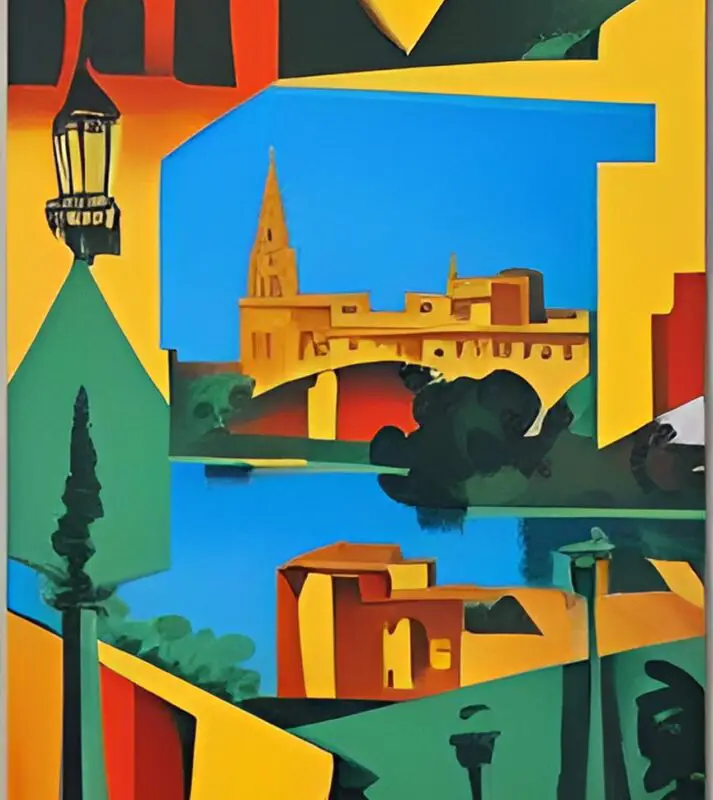Acrylic paint is a versatile medium that can be used to create a wide variety of textures. Whether you’re looking to add dimension to your paintings or create a tactile surface, there are several techniques you can use to create textures with acrylic paint.
Some of the ways we have found to create textures involve using different tools and techniques, which include layering and mixing, adding texture with additives, and using stencils and masks. However, you also need to consider how you are prepping the surface and the materials you have at hand. Without further ado, here is our article How to Create Textures with Acrylic Paint: A Guide for Artists.
Table of Contents
Preparing the Surface
Before you begin painting, it’s important to prepare your surface properly. This means making sure it’s clean and free of any debris that might affect the paint’s ability to adhere. You can also add a layer of gesso to your surface to provide a smooth, even base for your paint.

Techniques for Creating Texture
There are several techniques you can use to create texture with acrylic paint. Here are a few to get you started:
Palette Knife
A palette knife is a useful tool for creating texture in your paint. You can use the edge of the knife to scrape lines into the wet paint or add thick layers of paint for a more textured effect.
Dry Brush
A dry brush technique involves using a brush with very little paint on it to create a scratchy, textured effect. You can use this technique to create fur, grass, or other textures that require a rougher appearance.
on it to create a scratchy, textured effect. You can use this technique to create fur, grass, or other textures that require a rougher appearance.
Impasto
Impasto is a technique where thick layers of paint are applied to the surface, creating a three-dimensional effect. This technique is ideal for creating textured landscapes or abstract works. One artist who has used this technique to great effect is Van Gogh. His thick, impasto brushstrokes created a sense of depth and movement in his paintings.
created a sense of depth and movement in his paintings.
Sgraffito
Sgraffito is a technique where you scratch through a layer of wet paint to reveal the layer underneath. This technique is great for creating fine lines or adding details to your work.
is a technique where you scratch through a layer of wet paint to reveal the layer underneath. This technique is great for creating fine lines or adding details to your work.

Using Different Tools
One of the easiest ways to create textures with acrylic paint is to use different tools to apply the paint. You can use a palette knife , a sponge, or even a toothbrush to create interesting textures. Experiment with different tools and techniques to create unique textures that enhance your painting.
, a sponge, or even a toothbrush to create interesting textures. Experiment with different tools and techniques to create unique textures that enhance your painting.
Layering and Mixing Paint
Another way to create texture with acrylic paint is by layering and mixing paint. By layering different colors on top of each other, you can create a sense of depth and texture. You can also mix acrylic paint with different mediums, such as gels or pastes, to create unique textures.
with different mediums, such as gels or pastes, to create unique textures.
One artist who has used this technique is Jackson Pollock. His drip paintings created a sense of movement and texture by layering and mixing paint in different ways.
Adding Texture with Additives
Acrylic paint can also be mixed with various additives to create texture. For example, you can add sand, sawdust, or other materials to acrylic paint to create a gritty or rough texture. You can also use additives such as glass beads or pumice gel to create a more smooth, polished texture.
One artist who has used this technique is Gerhard Richter. His paintings incorporate additives such as sand and other materials to create unique textures and surfaces.
Creating Texture with Stencils and Masks
Another way to create texture with acrylic paint is by using stencils or masks. Stencils can be used to create repeating patterns or designs, while masks can be used to create a textured area on a painting. By using stencils and masks, you can create a precise and controlled texture in your painting.
You can also check out the video below for more in-depth details on how some artists achieve textures whilst using acrylic paint:


Final Words
Acrylic paint offers artists a multitude of options for creating textures in their work. From using different tools and techniques to layering and mixing paint or incorporating additives, there are endless possibilities for creating unique textures with this versatile medium. By experimenting with these techniques and finding what works best for their style and vision, artists can add depth and dimension to their paintings and bring their artistic visions to life. So go ahead and start exploring the exciting world of texture with acrylic paint!


